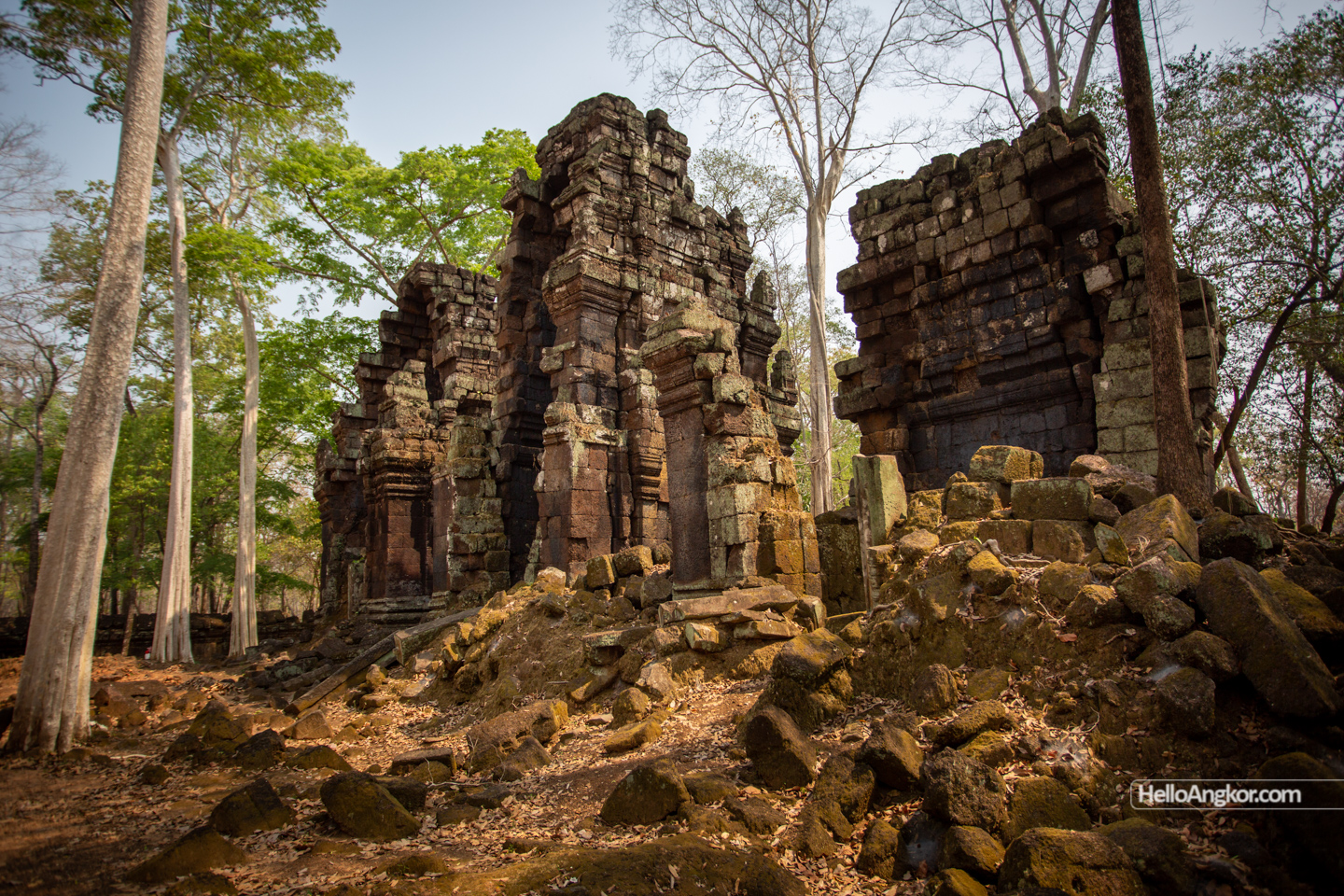- Area: Preah Vihear Province > Kuleaen District > Srayang Commune > Koh Ker Village
- | Type: Ancient Remains & Temples
Prasat Chrap of Koh Ker is a group of three laterite temples built upon a shared terrace enclosed by an outer laterite wall. The site also featured two brick “library” buildings in front of the three towers although only remnants of one can be seen today.
The three laterite towers are spectacularly massive in size and equally impressive is their partial collapse of the western side where they originally featured sandstone framed doorways. The rear of the towers is in quite a good state of preservation and look up to see the successive false floors that were decorated at each corner with “mini prasats” still seen on the central tower.
Images from the 2023 tour

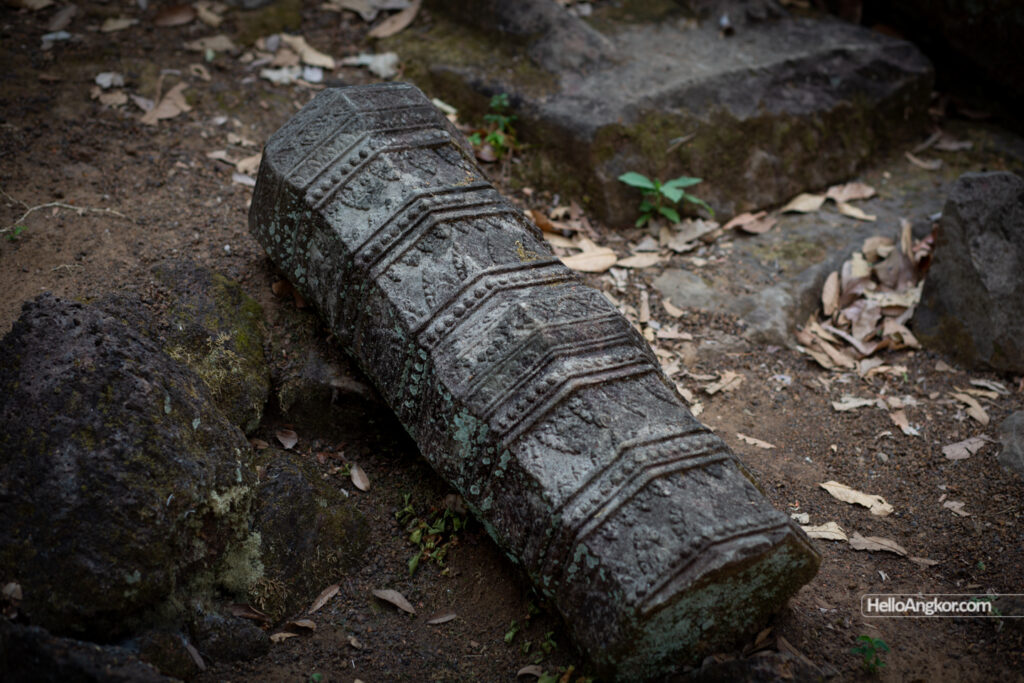

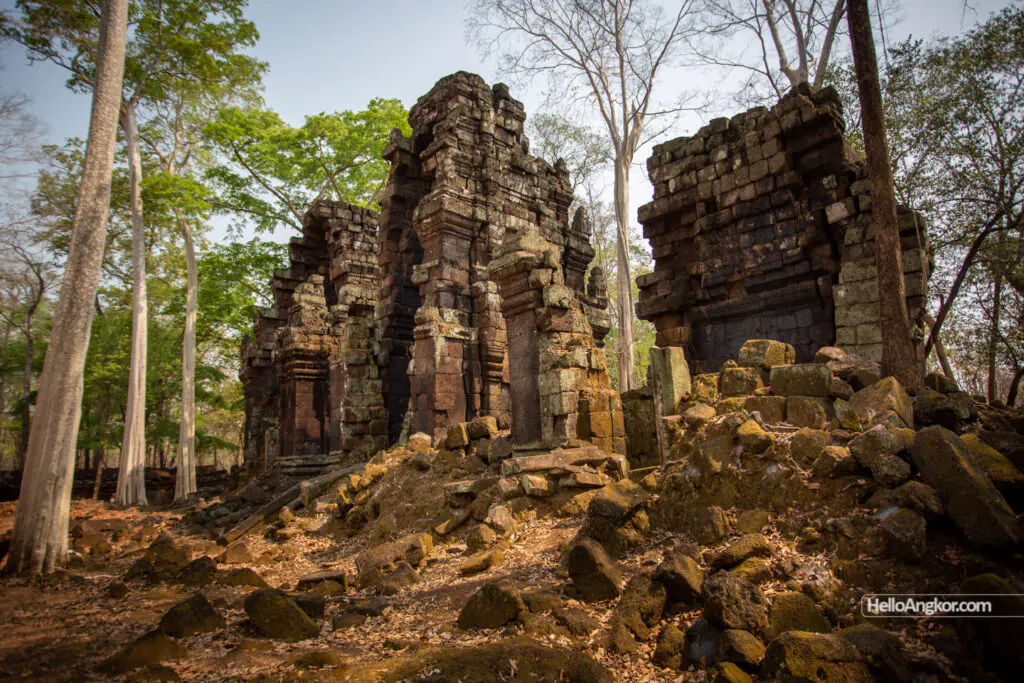
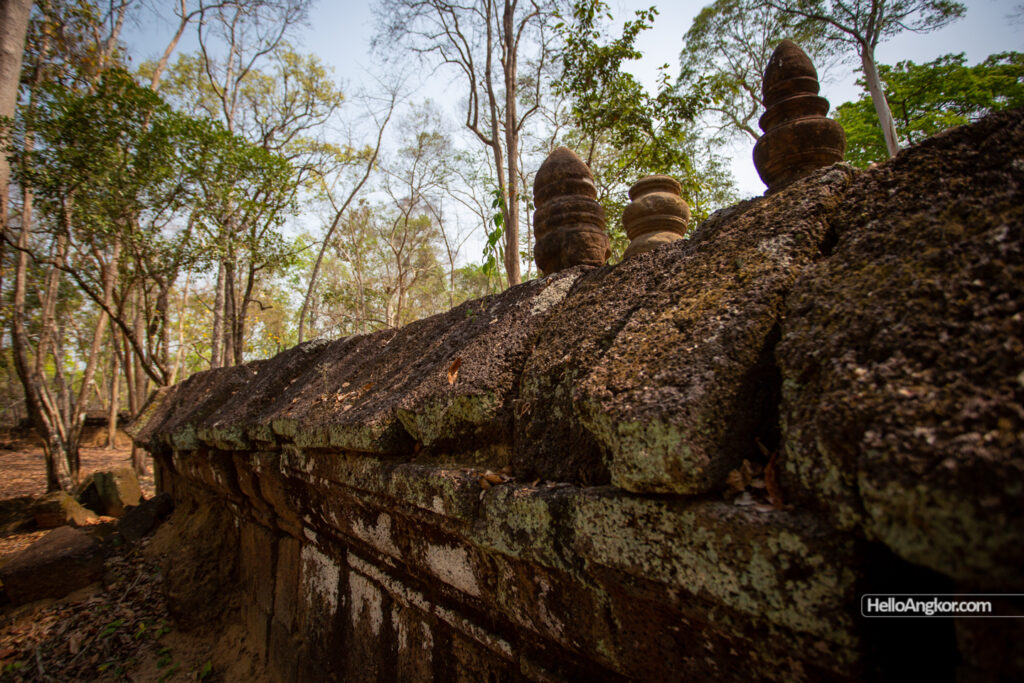
Images from the 2021 tour




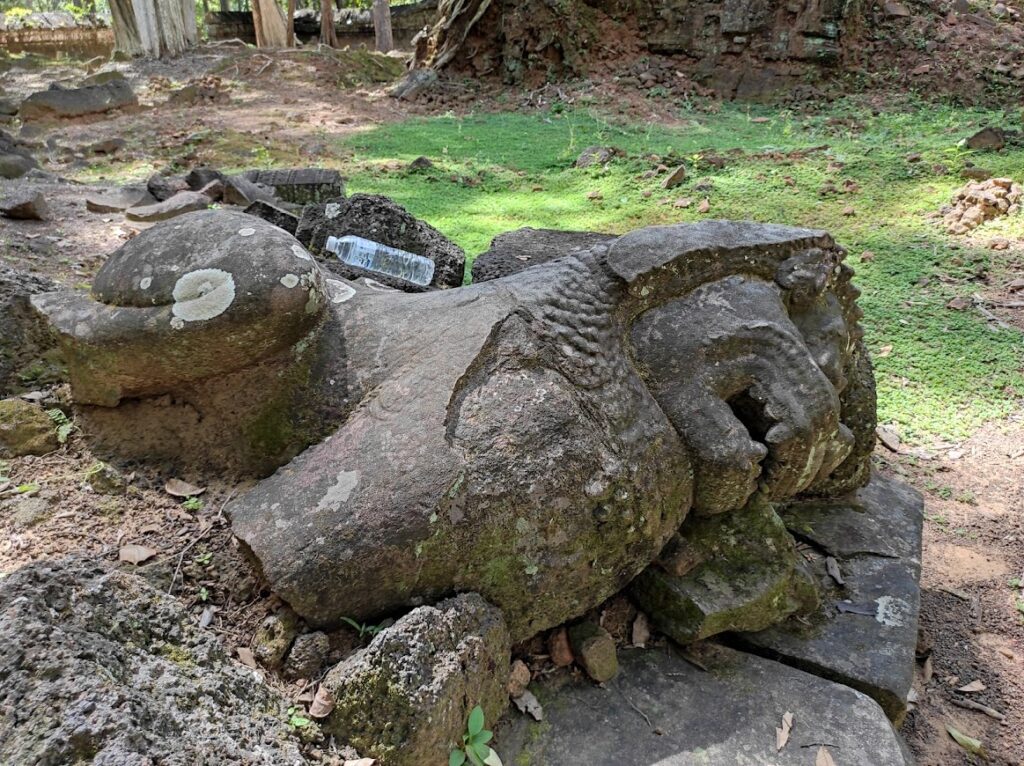
Contemporary Research
Two fragments of statuary from Prasat Chrap are located at the National Museum of Cambodia, which are believed to be fragments of the head of two statues, one of Shiva and another possibly also Shiva. The study was focused on the petrography of the sculptural production of Koh Ker style and these particular fragments were dated to the 2nd quarter of the tenth century. See: Towards A Quantitative Petrographic Database Of Khmer Stone Materials – Koh Ker Style Sculpture, 2009 & Interpreting Southeast Asia’s Past: Monument, Image and Text, 2008.
Other research indicates that Prasat Chrap was built after Prasat Thom the principal temple of the Koh Ker group. Researchers, in this case, defined the main body of temples as being constructed during the early to late tenth century and divided that into five construction phases with Prasat Chrap constructed in the 3, 4 and 5th stages. See: Construction Sequence of the Koh Ker Monuments Constrained by the Chemical Composition and Magnetic Susceptibility of Its Bricks, 2018
Historical Notes
Prasat Crap 274.3 (M.H.679).
At 400m. south-east of Pr. Camrèh, that is to say 800 m. E.-S.-E. from the S.-E. of the Rahal, is a rather important temple, Pr. Čráp. It is a front of three high laterite towers oriented exactly to the West, preceded by two libraries; the whole is enclosed in two concentric enclosures which are only interrupted in the west by voids which doubtless once occupied gopuras of light construction.
The three towers have their main face ruined. The interior and exterior correspond to the description of the great tower of the Bantay Pir Can temple (I.K 274) , including the presence of the amortizations. They each have their own sandstone sideboard, provided with a flight of steps in front of their false doors; these buildings are united by a sandstone terrace which has no steps except in front of the west doors; these doors are still preceded by seated lions on the side towers.
The libraries have their entrance maintained in the West despite the reversal of the general orientation. That of the North, in bricks, is completely ruined; that of the South, in laterite, has its base and its sideboard in sandstone.
The enclosures are laterite walls with a cupped roof section with curved sides topped with ovoid ears of which only a few overturned examples remain.
L’Art khmèr classique , monuments du quadrant Nord-Est, par Henri Parmentier, 1939
Map
Site Info
- Site Name: Chrap (Pr.) Khmer Name: បា្រសាទច្រាប
- Reference ID: HA11968 | Posted: May 22, 2021 | Last Update: July 23rd, 2023
- Tags/Group: Koh Ker, pr, ra, Temples
- Location: Preah Vihear Province > Kuleaen District > Srayang Commune > Koh Ker Village
- MoCFA ID: 685
- IK Number: 274.03

